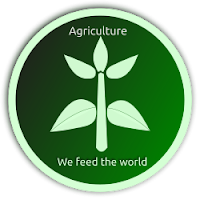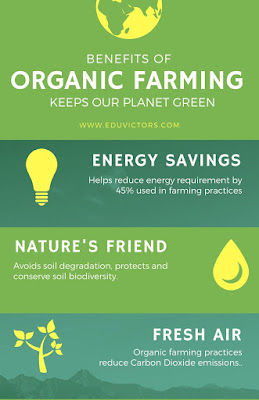Improvement in Food Resources
Study Notes
Food is essential for all living organisms to live. We depend on plants and animals for food. The increase in population has created much demand for food. It is important that we should increase food production without degrading our environment and disturbing the balances maintaining it. Hence there is a need for sustainable practices in agriculture and animal husbandry.
Improvement in crop yields
Different crops require different climatic conditions, temperature and photoperiods for their growth and completion of their life cycle. There are some cops which are grown in rainy season, called the kharif crops which extend from June to October. Kharif crops include paddy, soyabean, maize, cotton, green gram and black gram. Rabi crops are grown in the winter season which extends from November to April. Rabi crops include wheat, gram, peas and linseed. The major groups of activities for improving crop yields can be classified as –
- crop variety improvement,
- crop production improvement and
- crop protection management.
Crop variety improvement
Crop variety improvement can be achieved by the process of selection. Factors for which variety improvement is done are higher yield, improved quality, biotic and abiotic resistance, change in maturity duration, wider adaptability, desirable agronomic characteristics etc. Hybridisation occurs by a cross between two different varieties, which is known as inter-varietal crossing, or between two different genera, known as inter-generic crossing, or between two different species, known as inter-specific crossing. Crop yield can also be increased by introducing desirable genes into the crop plant. This results in genetically modified crops.
Crop production management
It is the protection of crops that are growing or have been harvested. Nutrient management, irrigation and cropping patterns can help improve crop production.
Nutrient management
Nutrients are supplied to plants by air, water and soil. Nutrients required by the plant are classified into macronutrients and micronutrients. Air supplies carbon and oxygen. Water supplies hydrogen and oxygen. Soil supplies the remaining 13 nutrients to plants. Deficiency of these nutrients affects physiological processes in plants including reproduction, growth and susceptibility to diseases. To increase the yield the soil can be enriched by supplying these nutrients in the form of manure and fertilizers.
Manure
Manure is produced naturally by the decomposition of animal excreta and plant waste. It contains organic matter, and thus, improves the water-holding capacity in sandy soils, and prevents water logging in clayey soils. Compost is prepared by decomposing farm waste, vegetable waste, domestic waste and sewage waste in pits by the process of composting. Vermicompost is prepared by using earthworms to hasten the decomposition of plant and animal waste by the process of vermi-composting. Green manure is provided to the plants by ploughing plants rich in nitrogen and phosphorous into the soil before sowing seeds.
Fertilizers
Fertilizers supply nitrogen, phosphorus and potassium. They are used to ensure good vegetative growth, giving rise to healthy plants. Fertilizers are a factor in the higher yields of high cost farming. Organic farming is a farming system with minimal or no use of chemicals as fertilizers, herbicides, pesticides etc. and with a maximum input of organic manures, recycled farm wastes and use of bio agents.
Irrigation
Ensuring that the crops get water at the right stages during their growing season can increase the expected yields of any crop. Irrigation is done by both traditional methods and modern methods. Irrigation systems are adopted to supply water to agricultural lands depending on the kinds of water resources available. Different sources of water are rivers, canals, ponds, lakes, tanks, dams, ground water etc.
Cropping pattern
Different cropping patterns are mixed cropping, inter-cropping and crop rotation. Mixed cropping is growing two or more crops simultaneously on the same piece of land. e.g. wheat and gram, or groundnut and sunflower. Inter-cropping is growing two or more crops simultaneously on the same field with some rows of one crop alternating with some rows of second crop, like soya bean and maize. Crop rotation is growing two or three different crops in a year on a piece of land. e.g. cereals alternating with legumes.
Crop protection management
Weeds are the unwanted plants competing with the crop plants for food, space and light, and finally reduce crop growth. Weeds can be removed by spraying herbicides or by removing them mechanically. e.g. Xanthium
Diseases in plants are caused by pathogens such as bacteria, fungi and viruses. Pathogens can be controlled by spraying herbicides, fungicides, insecticides etc.
Preventive methods such as proper seed bed preparation, timely sowing of crops, intercropping and crop rotation also help in weed control.
Storage of grains
Storage losses in crops are due to biotic factors like insects, rodents, fungi, mites and bacteria. Abiotic factors like inappropriate levels of moisture and temperature in the storage area also damage crops. These factors can be controlled by proper treatment and by systematic management of warehouses.
Preventive and control measures are used before grains are stored for future use. They include strict cleaning of the produce before storage, proper drying if the produce first in sunlight and then in shade and fumigation using chemicals that can kill pests.
Animal Husbandry
Animal husbandry is the scientific management of animal livestock. It includes various aspects such as feeding, breeding and disease control. Animal based farming includes cattle, goat, sheep, poultry and fish farming.
Cattle farming
Cattle husbandry is done for two purposes- milk and draught labour for agricultural work such as tilling, irrigation and carting. Milch animals produce milk where as draught animals are used for farm labour. The two major species of Indian cattle are Bos indicus, or cows, and Bos bubalis, or buffaloes.
Management practices for cattle include cleaning, sheltering and feeding. Cleaning involves periodic washing to get rid of dirt and loose hair. Shelter facilities include well ventilated roof sheds which protect cattle from rain, cold and sun. Animal feed includes roughage feed which is largely fibre, and concentrate feed which are low in fibre and contain relatively high levels of proteins and other nutrients.
Cattle suffer from a number of diseases. The diseases, besides causing death, reduce milk production. Diseases in cattle are caused by both external and internal parasites. External parasites live on the skin and cause skin diseases. Internal parasites affect the stomach and intestinal parts. Vaccinations are given to farm animals against many major viral and bacterial diseases.
Poultry farming
Poultry farming is the practice of raising fowl for egg production and chicken meat. Layers are used for producing eggs and broilers are used for producing meat. Cross –breeding is common in poultry to develop new varieties with the desirable traits. e.g Indian breed Aseel is cross-bred with the foreign breed Leghorn.
Cross-breeding is used to develop offspring with desirable traits. The desirable traits include dwarf broilers that can be used as meat within a short period of time, higher number and better quality of chicks, and tolerance to high temperatures during summer.
For good production of poultry birds, good management practices are important. These include maintenance of temperature and hygienic conditions in housing and poultry feed, as well as prevention and control of diseases and pests.
Fish production
Fish production includes the tinned true fish as well as shellfish such as prawns and mollusks. There are two ways of obtaining fish. One is from natural resources, which is called capture fishing. The other way is by fish farming which is called culture fishery.
Marine fisheries
Popular marine fish varieties include pomphret, mackerel, tuna, sardines and Bombay duck. Some marine fish of high economic value are also farmed in sea water. This includes finned fishes like mullets, bhetki, and pearl spots, shellfish such as prawn, mussels and oysters as well as sea weed. Oysters are also cultivated for the pearls they make. As marine fish stocks get further depleted the demand for more fish can only be met by such culture fisheries a practice called mariculture.
Inland fisheries
Fish culture is sometimes done in combination with a rice crop so that fish are grown in the water in the paddy field. More intensive fish farming can be done in composite fish culture system. In such a system a combination of five or six fish species is used in a single fishpond. Catlas are surface feeders, Rohus feed in the middle zone of the pond, Mrigals and common carps are bottom feeders and grass carps feed on the weeds of the pond. To overcome good quality seed problem in fish farming hormonal stimulation technique is introduced. This has ensured the supply of pure fish seed in desired quantities.
Bee keeping
The practice of maintaining honey bee colonies in beehives is called bee-keeping or apiculture. It requires low investment. Apiaries or bee farms are established for commercial production of honey. In addition to honey the beehives are a source of wax which is used in various medicinal preparations.
Apis cercana indica (Indian bee), Apis dorsata (Rock bee), Apis florae (little bee) and Apis mellifera (Italian bee) are used for commercial honey production.
The value or quality of honey depends upon the pasturage or the flowers available to bees for nectar and pollen collection and the kind of flowers available will determine the taste of the honey.





No comments:
Post a Comment
We love to hear your thoughts about this post!
Note: only a member of this blog may post a comment.